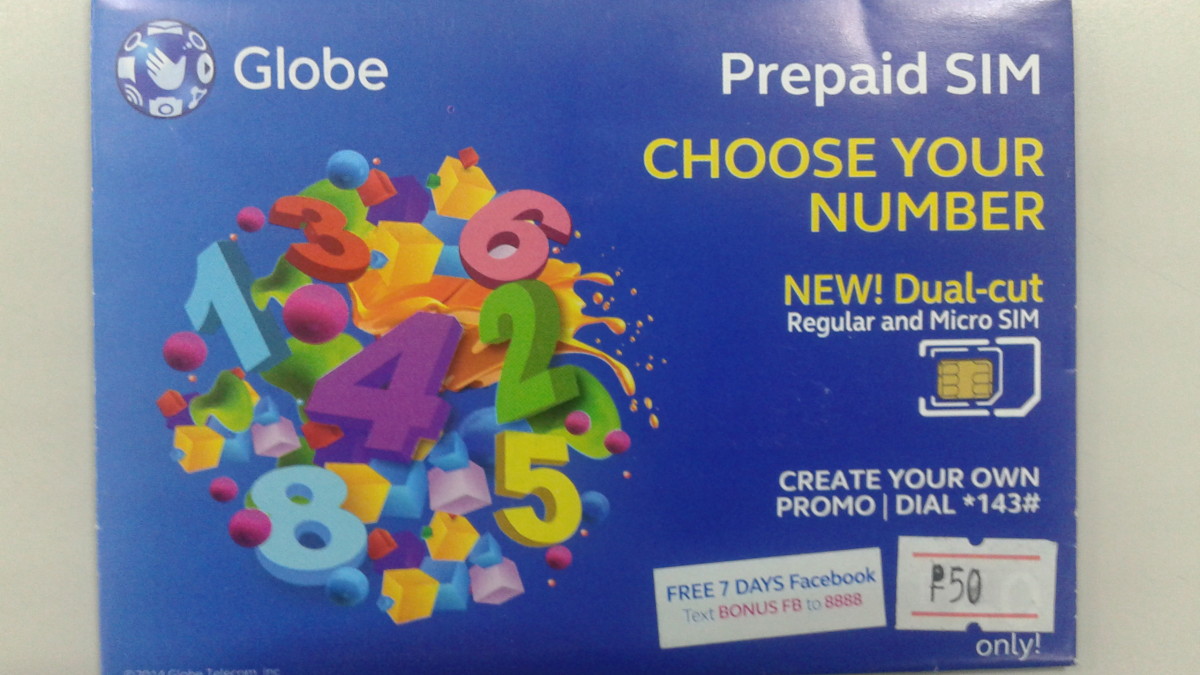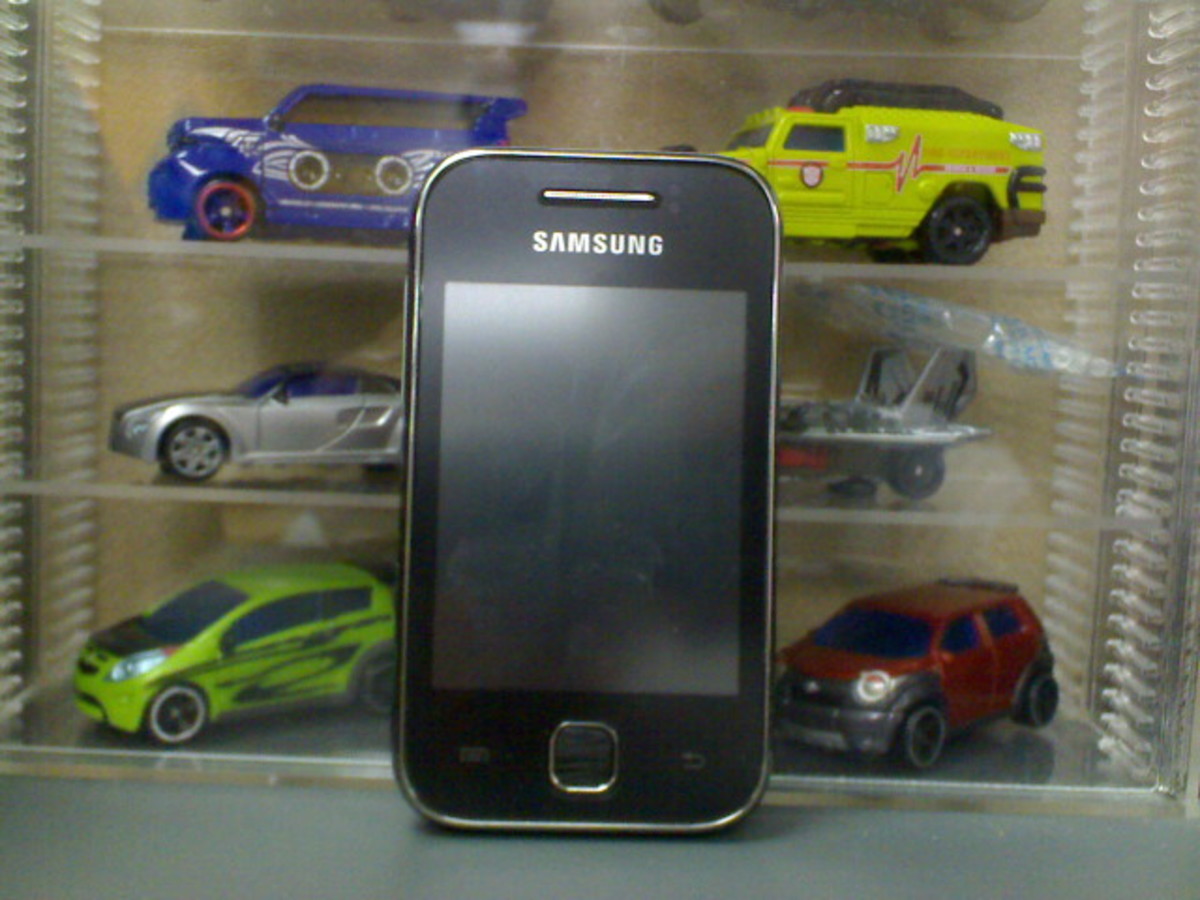Making Your Own Free Ringtone
Many people fall victim to paying for ringtones. They willingly pay Verizon or AT&T several dollars to download an extremely short, 30 second piece of a song that can be made into a ringtone. The good news is that you never need to pay these prices again, and can in fact get ringtones for free just by making them yourself. A ringtone is very easy to create, and this guide will teach you exactly how to do it, even if you aren't that good with technological things. It will then show you how to install the ringtone on your phone. Remember that all of this is free. If you're paying for any of it, you're being scammed.
- Find out what your boss sees on your Facebook and how to hide it
- FREE speech recognition on Windows!
- Learn how to really secure Facebook
- Facebook blocked? Unblock it here.
- Friend your parents on Facebook without exposing certain items to them
We're going to be using a site that allows you to create your own ringtones from songs you already own. To do that, you're going to need an MP3 copy of the song you wish to make into a ring tone. You can get MP3s from Amazon. Remember that you aren't paying for the ringtone in this process, but rather the song itself. You can copy it for the ringtone and keep the song to play on your iPod or other music player. You could also burn the song from a CD you own or borrow it from a friend. Any way that you get the song, you need an MP3 copy. Once you have that, head over to a site called MakeYourOwnRingtone (I wonder what they do). It is located at http://www.makeownringtone.com/.
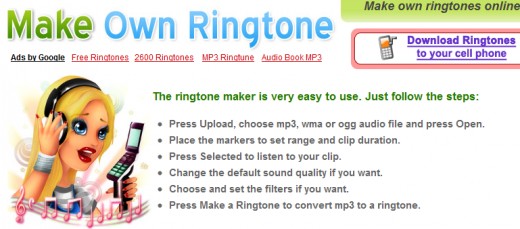
One warning: the site has a lot of ads, so be careful where you click. But hey, they gotta pay somehow, right? Once there, you are going to want to upload your chosen song. Click the semi-small "Upload" button and select the file.
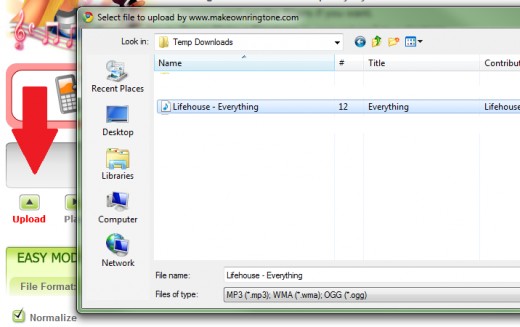
After a short (or rather long, depending on your connection speed) wait, the file will be loaded into the ringtone editor. Here is where you will be able to make your ringtone. Begin by using your mouse to select the area of the song you want as the ringtone. Usually the chorus works best, but you may need to search around for a bit to find it. Remember that most ringtones are in the range of 25 to 35 seconds, so choose a range that matches that.

Unless you know what you're doing, leave the settings under that alone. Make sure that you are downloading to a computer, and as an MP3 by selecting those options in the drop down menu. When you're ready, click "Make Ringtone."
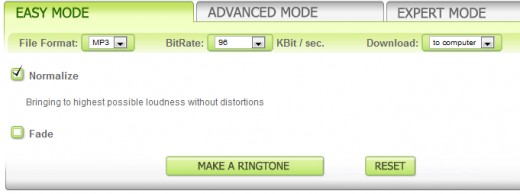
In the small window that pops up, you can listen to your ringtone. If you like it, right click on the link and choose to "save the link as." Name it something and save it to a place where you will remember where it is.
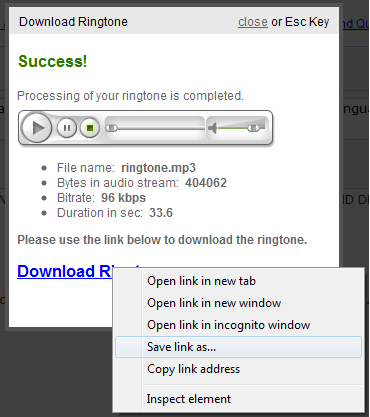
Now you are finished with the site. You can now send the ringtone to your phone in several ways. If you own a smartphone such as the iPhone or an Android device, you can mount your device as a USB device and transfer the file from their (Android) or import it in iTunes (iPhone).
With Android, mount your phone and then open the folder that corresponds to your phone's internal memory card. Create a new folder called "ringtones" and paste the file in there.
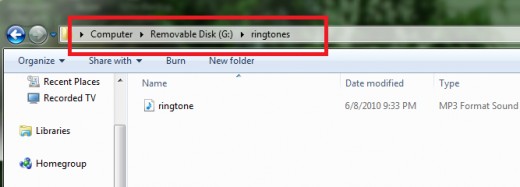
Unmount your device and go to Settings > Sound and display > Phone ringtone. You will notice the file you created is now listed and you can select it.
If you have an iPhone (learn how easy it is to switch to Android), the process is, unfortunately, a bit more complicated. Demo Geek wrote a great article with step by step directions you can use to get your ringtone working. That article is located here.
Once you add your ringtone to your smartphone, you can use it anytime.
If you don't own a smartphone, don't worry; there is a way to get your homemade ringtone onto your basic phone as well. It simply involves sending a media message with your ringtone attached to your phone. The first thing you need to do is find your phone's "email number." This is usually your cell number followed by @yourcarrier.net or something similar. A list of these numbers can be found on this Make Of Use page: here. Make sure you are using the number designed for multimedia messages and not plain text! Once you find your phone's email, compose a new message in your email program to that number. Do not add a subject or body text. All you need to do is attach your ringtone to the email and send it.
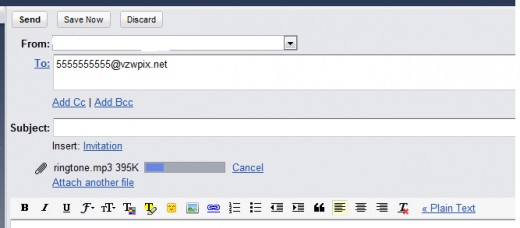
In a few moments, your phone will ring. It will then download the message. (Note: if you don't have a texting / picture messaging plan, this will probably cost around 45 cents.) Once it downloads, try to find a menu that allows you to save the file. Every phone is different, so I can't walk you through this part, but usually there is a menu item that allows you to save the file as a ringtone. You may need to save it as a sound file first, then open it and set it as a ringtone. You can search Google if you still can't figure it out. In the end, you should have your ringtone file set as your ringtone!


